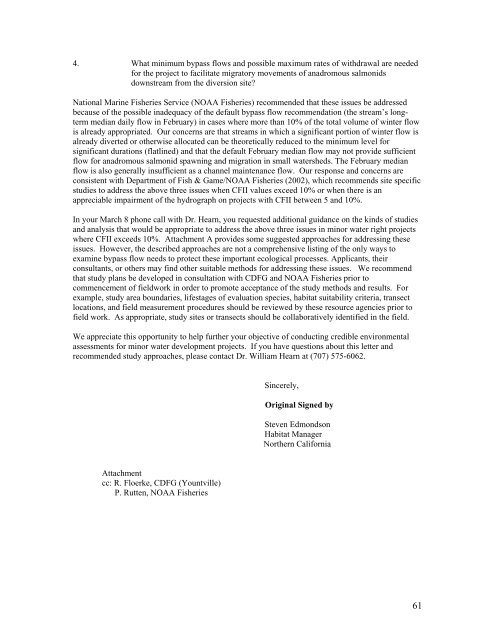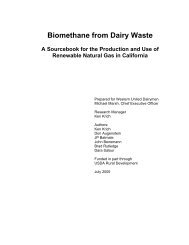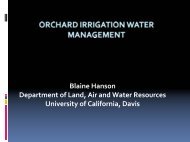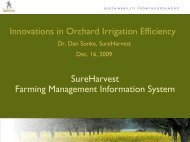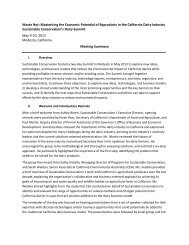THE PONDS PROJECT - Sustainable Conservation
THE PONDS PROJECT - Sustainable Conservation
THE PONDS PROJECT - Sustainable Conservation
You also want an ePaper? Increase the reach of your titles
YUMPU automatically turns print PDFs into web optimized ePapers that Google loves.
4. What minimum bypass flows and possible maximum rates of withdrawal are needed<br />
for the project to facilitate migratory movements of anadromous salmonids<br />
downstream from the diversion site?<br />
National Marine Fisheries Service (NOAA Fisheries) recommended that these issues be addressed<br />
because of the possible inadequacy of the default bypass flow recommendation (the stream’s longterm<br />
median daily flow in February) in cases where more than 10% of the total volume of winter flow<br />
is already appropriated. Our concerns are that streams in which a significant portion of winter flow is<br />
already diverted or otherwise allocated can be theoretically reduced to the minimum level for<br />
significant durations (flatlined) and that the default February median flow may not provide sufficient<br />
flow for anadromous salmonid spawning and migration in small watersheds. The February median<br />
flow is also generally insufficient as a channel maintenance flow. Our response and concerns are<br />
consistent with Department of Fish & Game/NOAA Fisheries (2002), which recommends site specific<br />
studies to address the above three issues when CFII values exceed 10% or when there is an<br />
appreciable impairment of the hydrograph on projects with CFII between 5 and 10%.<br />
In your March 8 phone call with Dr. Hearn, you requested additional guidance on the kinds of studies<br />
and analysis that would be appropriate to address the above three issues in minor water right projects<br />
where CFII exceeds 10%. Attachment A provides some suggested approaches for addressing these<br />
issues. However, the described approaches are not a comprehensive listing of the only ways to<br />
examine bypass flow needs to protect these important ecological processes. Applicants, their<br />
consultants, or others may find other suitable methods for addressing these issues. We recommend<br />
that study plans be developed in consultation with CDFG and NOAA Fisheries prior to<br />
commencement of fieldwork in order to promote acceptance of the study methods and results. For<br />
example, study area boundaries, lifestages of evaluation species, habitat suitability criteria, transect<br />
locations, and field measurement procedures should be reviewed by these resource agencies prior to<br />
field work. As appropriate, study sites or transects should be collaboratively identified in the field.<br />
We appreciate this opportunity to help further your objective of conducting credible environmental<br />
assessments for minor water development projects. If you have questions about this letter and<br />
recommended study approaches, please contact Dr. William Hearn at (707) 575-6062.<br />
Sincerely,<br />
Original Signed by<br />
Steven Edmondson<br />
Habitat Manager<br />
Northern California<br />
Attachment<br />
cc: R. Floerke, CDFG (Yountville)<br />
P. Rutten, NOAA Fisheries<br />
61


